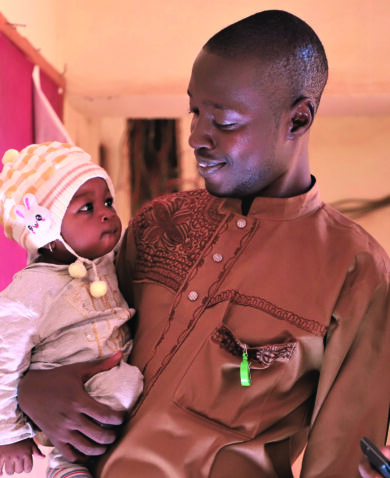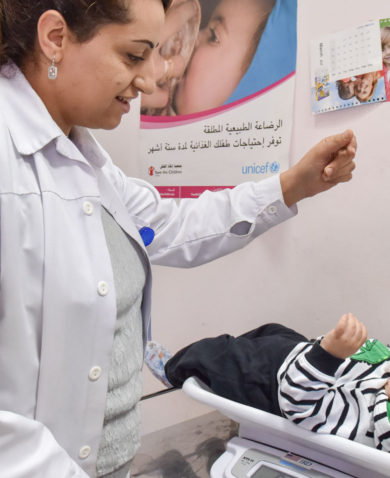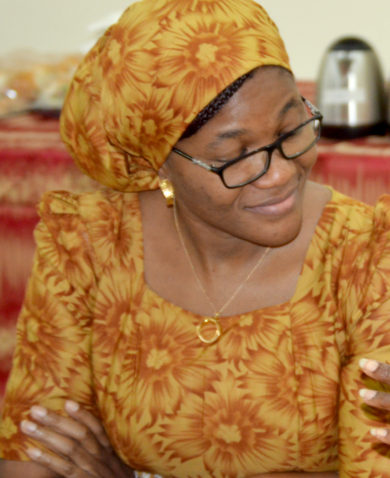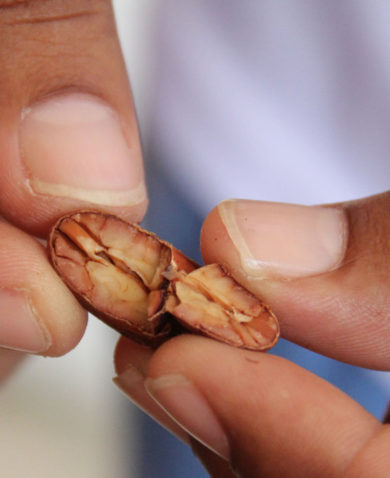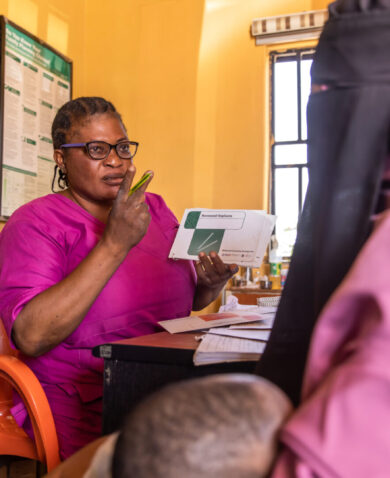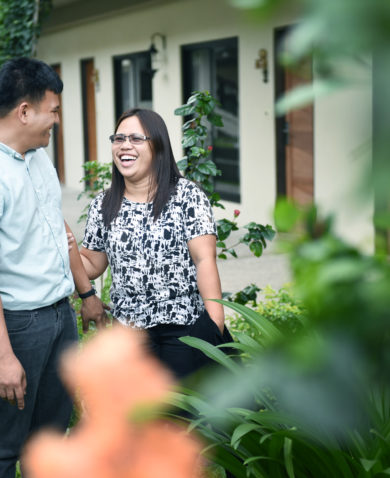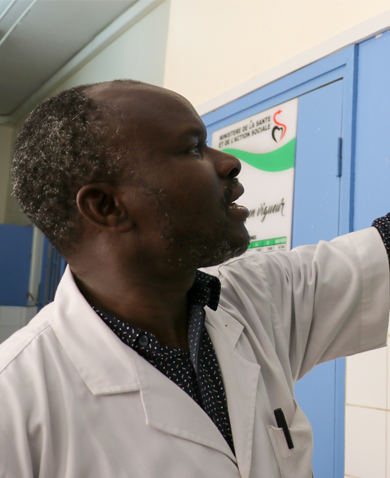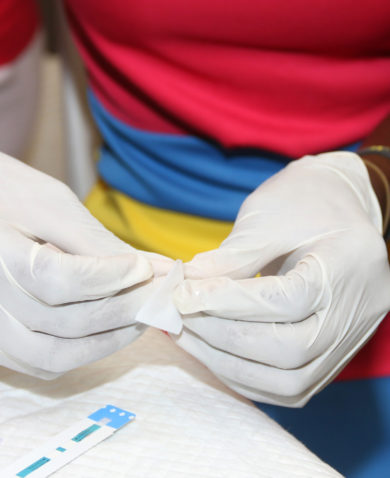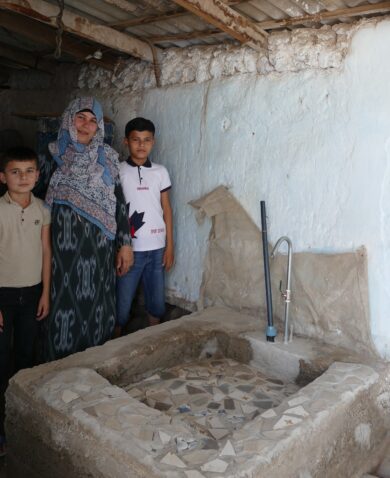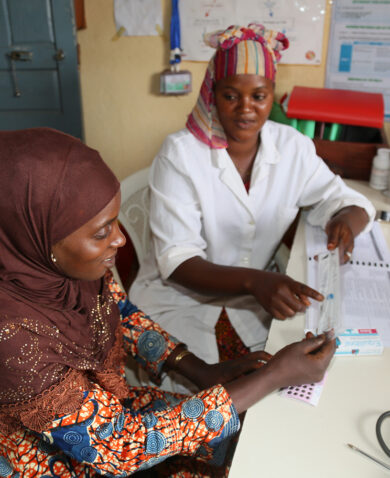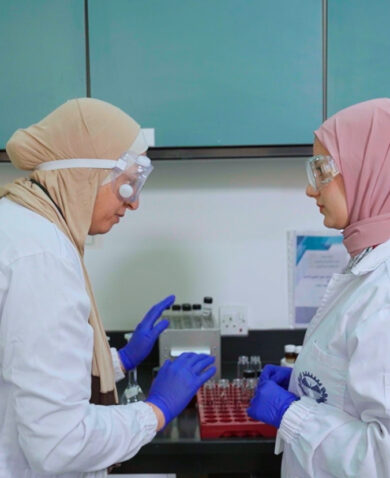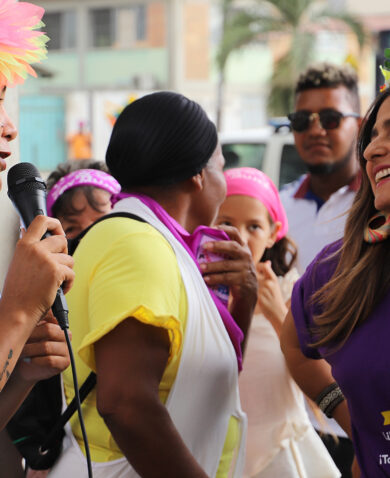
Stigmatized for 2,535 Days
June 4, 2019 | 4 Minute ReadFollowing Menstrual Hygiene Day (May 28), Dr. Jordene Hale and Nausheen Rajan reflect on how to combat the stigma and inequities surrounding menstruation.
Women menstruate an average of 2,535 days of their lives, according to Dr. Julitta Onabanjo of the United Nations Population Fund. That’s 2,535 days in which many women experience increased stigma, isolation, and hardship. There are many countries that are working to address this reality through the support of local partners and donors, but there is still a long way to go. Practical solutions for local contexts must be embraced to effectively respond to preexisting sociocultural norms that perpetuate menstruation stigma.
Lack of access to menstrual hygiene products continues to impact the health, education, employment, and general well-being of women around the world. Roughly one quarter of the total global population is of reproductive age; however, 1.2 billion women globally lack funds to pay for feminine hygiene products. In Kenya, half of school-age girls do not have access to sanitary pads. Often coined “period poverty,” the inability to afford basic sanitary products monthly has consequences for all women. Lack of access to these basic sanitary products negatively effects feminine hygiene and health; and it can impact girls’ education by preventing them from attending school. In some cases, like in Nepal, social stigma calls for isolation of menstruating women in “menstruation huts,” where they can die of exposure, animal bites, or smoke inhalation (from fires lit to keep warm). This issue extends beyond the developing world: Plan International U.K. found that one in 10 girls in the United Kingdom are unable to afford sanitary products.
Period poverty has been further complicated by sales tax on sanitary products. Until July 2018, there was a 12 percent tax on sanitary pads in India. In Sri Lanka, a 30 percent import tax on sanitary pads was lifted only in September 2018. The United Kingdom has a five percent tax on sanitary products, and in the United States only 15 states and the District of Columbia have eliminated sales tax on tampons and sanitary pads.
Global Response
NGOs, governments, donors, and individuals around the world are challenging the status quo of menstruation inequity in innovative ways:
1. Reusable sanitary products for schoolgirls in Uganda. In Uganda’s Rhino Refugee Camp, where there are more than 116,000 refugees, schoolgirls could not afford to buy sanitary pads and reused rags instead. The NGO WoMena Uganda rolled out a pilot for 108 schoolgirls, mothers, and teachers between the ages of 14 and 46. They were given reusable sanitary products (menstrual cups and reusable pads) and materials educating them on menstruation. Through this pilot program, NGO staff trained all women and girls at the Rhino Camp on how to insert and remove the cups, wash the reusable pads, and manage menstrual pain. Participants were given menstrual calendars to track their cycles. After the training, product uptake was high, with 61 percent using the cups and 100 percent using the reusable pads. Most importantly, women were able to maintain dignity during their cycle, attend school, and earn income.
2. Low-cost pads for rural women in India. Indian social entrepreneur Arunachalam Muruganantham, also known as “Pad Man,” found that pads cost 40 times more than the materials used to make them when he went into town to buy his wife a sanitary pad. According to this article, women in some rural areas of India use unhygienic materials, such as leaves and sand, while menstruating. Women who use cloth pads are often too embarrassed to dry them in the sun, causing mold and mildew that can lead to reproductive diseases. It is estimated that 70 percent of all reproductive health diseases in India are caused by poor menstrual hygiene, which can also impact maternal mortality. Muruganantham created a low-cost method to produce sanitary pads. He increased the use of sanitary pads and created jobs for rural women. In 18 months, he built and distributed 250 machines to NGOs and women’s self-help groups in the poorest and most underdeveloped states in Northern India. Each machine costs around 75,000 Indian rupees (around $1,066) and can produce 200 to 250 pads a day, which sell for an average of 2.5 rupees each (less than four cents). At this rate, a machine can provide a comfortable stream of income for up to ten women a day.
3. Advocating for gender-based rights at universities in Ethiopia. The Yellow Movement at the Addis Ababa University School of Law fundraises to provide female university students with menstrual supplies and raise awareness of gender-based rights. At their weekly informational tables, they provide sensitization on gender issues to fellow students. This is helping break the taboos surrounding menstruation.
4. Behavior change campaigns that reflect the local context. The Bangladesh Rural Advancement Committee (BRAC) — the country’s largest NGO — has been working on improving menstrual hygiene at both the community and school levels since 2006 using innovative behavior change techniques that directly respond to sociocultural stigmas, particularly in a predominantly Muslim nation. For example, BRAC led a communication campaign that included meetings held separately for men, women, adolescent boys and girls, and children to share hygiene education tailored to each group. BRAC also provided the resources to develop guidebooks that included verses from the Holy Quran and other religious texts that referenced topics related to hygiene. The more than 18,000 Imams (religious leaders) who were trained then used these books during Friday prayers to promote better health and hygiene practices. In rural communities in Bangladesh, these topics cannot be openly discussed because of cultural norms and traditions. However, BRAC’s health volunteers continue to sell sanitary napkins door-to-door because there is still significant taboo surrounding the topic of menstrual hygiene, which prevents women from purchasing sanitary products in stores.
The Way Forward
There is a long way to go in ensuring adequate access to sanitary products for women around the world, but a variety of interventions — reducing taxation on menstruation, helping local entrepreneurs provide low-cost, locally-made, and sustainable menstrual products, and removing stigma around menstruation — are helping to improve availability and access. It is on us as development practitioners to be intentional about responding to this topic as we implement projects. There is such a stigma around menstruation that it often takes the backseat role, even though it has an impact on the people we work with around the world. A pragmatic approach that looks at the challenges in the forefront within each local context must be considered, particularly in the design stage of USAID and other donor-funded education, gender, agriculture, youth, and health projects. Along with encouraging entrepreneurial solutions, such as campaigns championing health education, the hope is that over time these solutions will be able to respond to greater behavior change that combats the stigma around menstruation.
Posts on the blog represent the views of the authors and do not necessarily represent the views of Chemonics.






